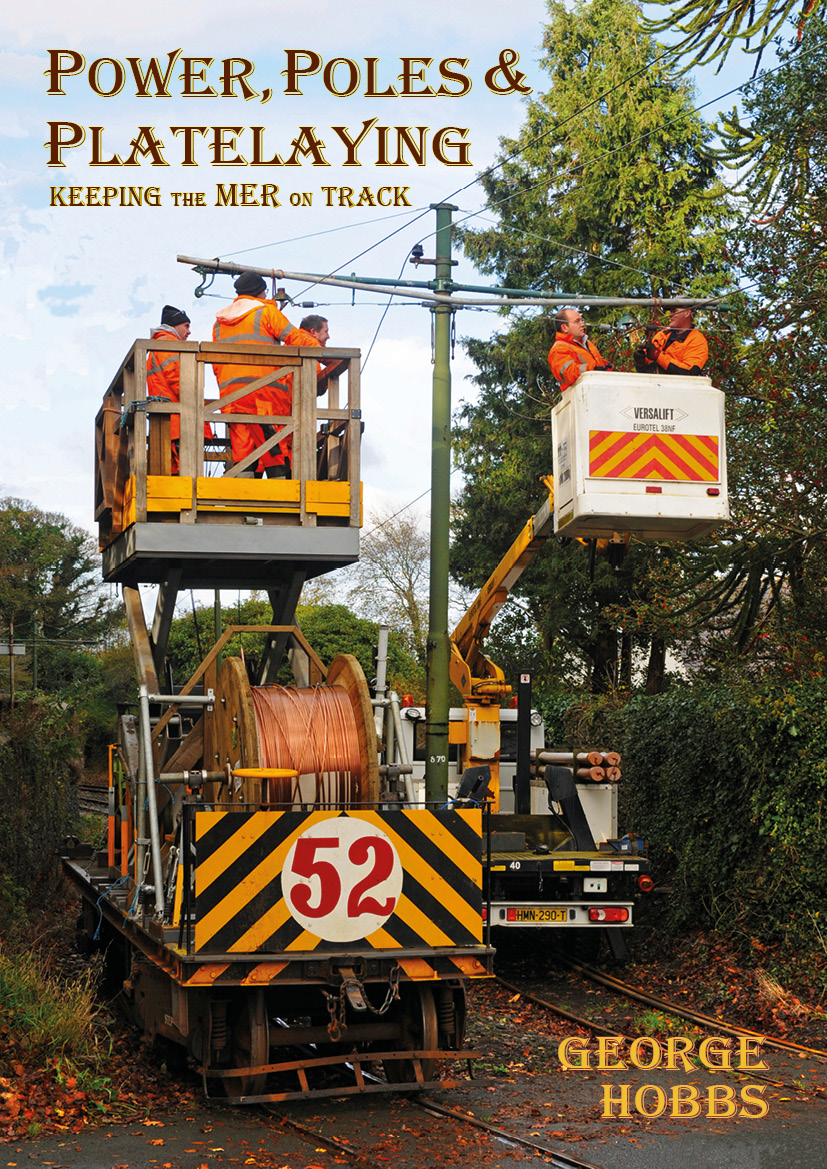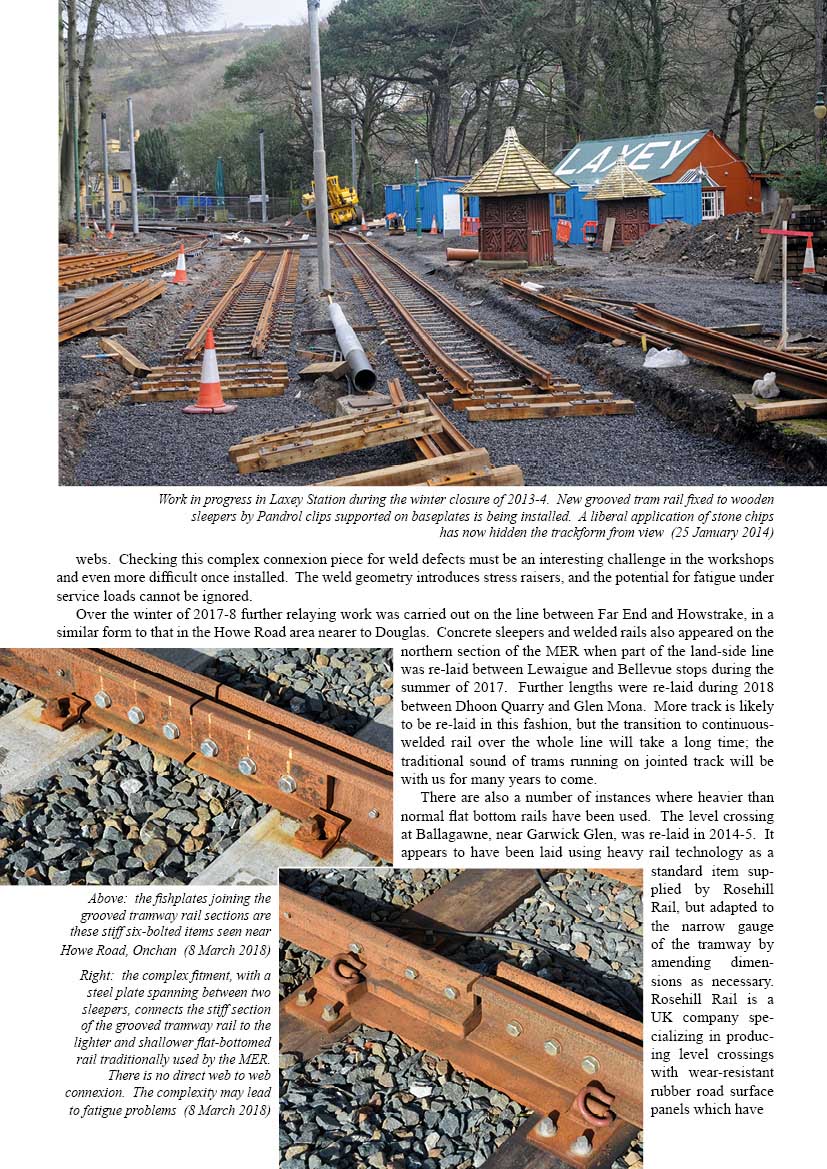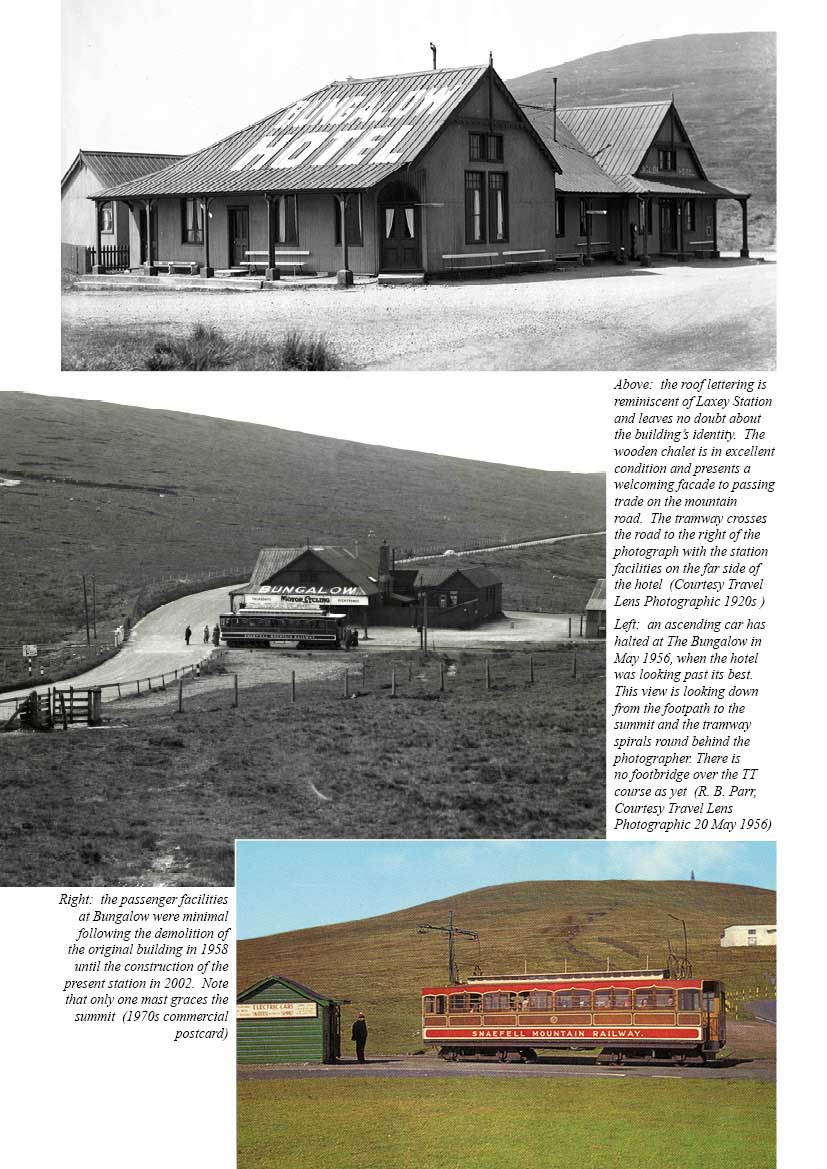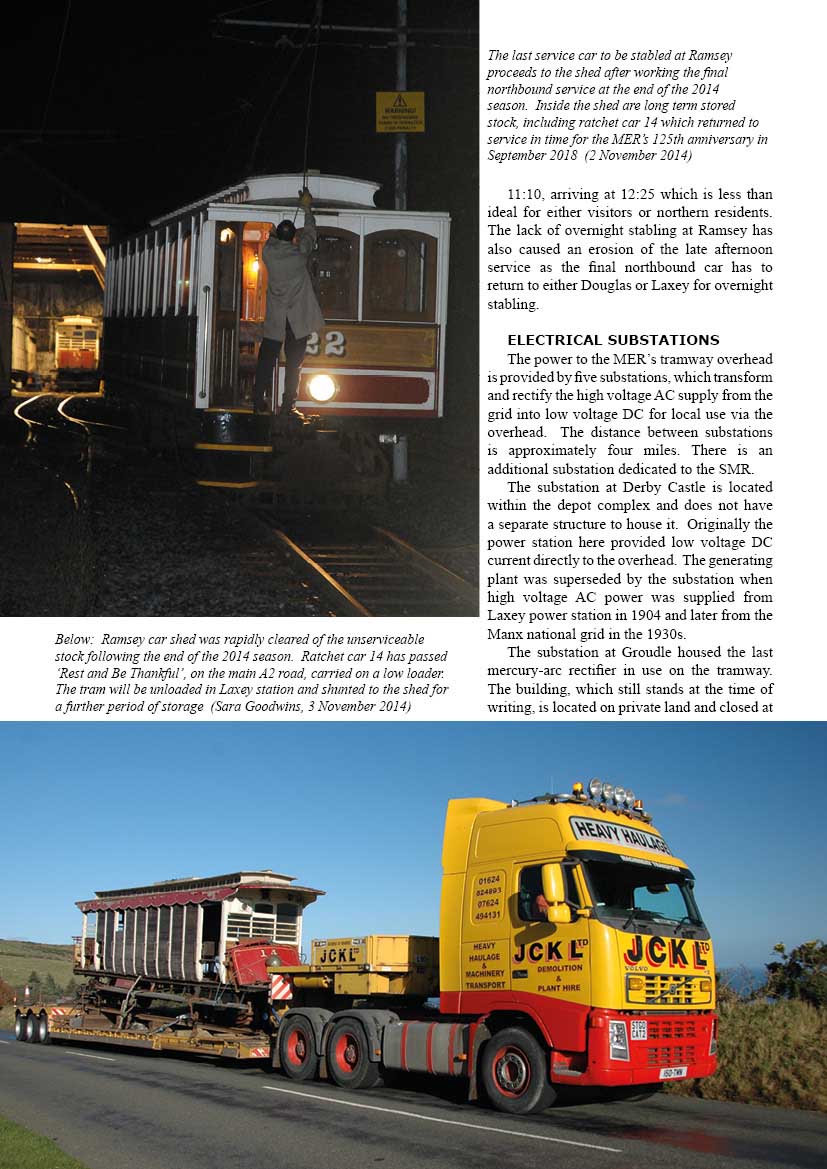Power, Poles & Platelaying: keeping the Manx Electric Railway on track
£19.95
Written by George Hobbs
The engineering and maintenance behind the Victorian railways.
“The small diameter of the MER trolley wheel means that it spins at a relatively high speed. Taking the contact diameter as 2.36in (60mm), and assuming no slippage, then over a single journey between Douglas and Ramsey the wheel rotates about 150,000 times, at an average speed in excess of 2000rpm, during the hour and a quarter journey.” Power, Poles & Platelaying Page 75
A different look at the Manx Electric and Snaefell Mountain Railways on the Isle of Man.
The book examines the engineering infrastructure behind these historic lines. The technologies involved in their creation, development, renewal and maintenance are examined and an eye cast on the long-term future for the systems.
When constructed, in the late Victorian era, the lines were in the vanguard of rapidly evolving electrical engineering technology. In the 125 years since the MER was built, developing technology in electrical power supply made successive installations obsolete. In the twenty-first century, efficient solid state equipment has largely superseded all that has gone before.
In parallel with the electronic revolution there have been major advances in permanent way which are leading to higher levels of passenger comfort and safety, with lower maintenance costs.
The civil and structural engineering aspects have not been neglected either as improved coating techniques mean that the major steel structure at Ballure, like the Forth Railway Bridge, now needs attention on an extended thirty-year cycle rather than every few years as before.
All these engineering developments have been taken in the shadows of the historic fleet of cars which continue to serve the island's population and visitors. Indeed many tourists will have little idea of the work which is carried out on the railways outside the holiday season: over the winter months, professional teams renew track, structures and overhead and are charged with completing repairs and improvements before the next season.
This book provides enthusiasts and the merely curious with an overview of the processes at work in building and maintaining these historic railways.
From the Publisher
We've been visiting the Isle of Man for decades longer than we've lived and worked here. On our first visit we were so delighted with the heritage railways that we took all sorts of photographs of how things were done. Little did we know that, in many ways, we were photographing something which was rapidly disappearing.
On our second visit, less than a year later, much of what we'd photographed had already gone. Yet very few people would probably have noticed a difference. The trams themselves were just as lovely as they had been the previous year. It was the inexorable change of the working environment, the all-important engineering that we, and particularly the senior partner, noticed.
It was inevitable, of course. The days of those working on the railway being expected to put in long hours in unsafe conditions had gone and rightly so. New, more efficient working practices had begun to be introduced to the old railways. Less idiosyncratic working methods, better equipment, new track and overhead, more efficient power supply.
But with all this, something had gone from the old railway. I'm so pleased we were there in time to see it pass. As the senior partner says: photograph it now; you never know when it will disappear.
Copyright 2019 Loaghtan Books. All rights reserved.










